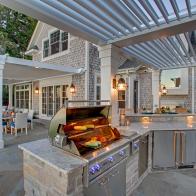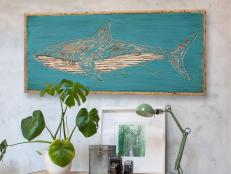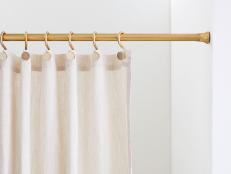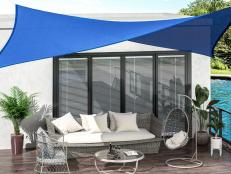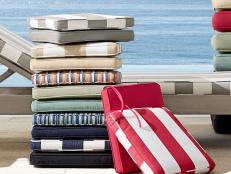Grow an Indoor Kitchen Garden


Photo by Crystal Liepa / Courtesy of Cool Springs Press
Imagine this: It’s minus 27 degrees F outside, but indoors, where it’s warm and toasty, your windowsills and bookshelves are lined with pots and planters of tasty microgreens, nutritious Swiss chard, baby lettuces and even cherry tomatoes.
Growing an edible garden indoors may sound like wishful thinking, but Elizabeth Millard, author of Indoor Kitchen Gardening: Turn Your Home Into a Year-round Vegetable Garden (Cool Springs Press), says if she can do it, you can, too. Millard ought to know; she’s been raising fresh food in her Minnesota home for years, while the frigid winter weather rages outdoors.
Millard and her partner, Karla Pankow, started growing their own fruits and vegetables after what she calls a “life-changing” trip to Africa on behalf of Habitat for Humanity. That’s where the two “started thinking about sustainability, real foods and the idea of community gardening,” she says.

Photo by Crystal Leipa / Cool Springs Press
“I started playing around and experimenting with plant starts in the house. I’ve killed every houseplant I’ve ever had, but Karla had experience with a family farm.”
With Pankow’s help, Millard began sowing and harvesting microgreens and dabbling with other crops. “Even my failures gave me the confidence to go forward. Some things didn’t work, but some did.” Eventually the pair opened Bossy Acres, an organic community farm based in Minneapolis.
Millard’s book is a guide for gardeners who want to extend their own harvests, whether they live in in cold climates or regions with long growing seasons. “There’s a certain thrill in seeing a Swiss chard sprout,” she has written, “and if you’re wearing your pajamas at the time, excitement is doubled.”
Microgreens are one of her favorite indoor crops and she likes cress because it sprouts fast and is easy to grow. She also grows radish tops for their peppery, spicy flavor. “Carrot tops are great, too, and taste just like full-grown carrots—it’s the craziest thing.”
“Onion tops are good, but they’re strong. A thimble full is too much. Beet tops take a little longer to grow, but they’re gorgeous, with electric red stems. It’s like growing neon! Remember, microgreens are nutrient-dense, so you don’t have to make a whole salad out of them. Use them as condiments.”
If you’re an ambitious indoor gardener, Millard says tomatoes, mushroom and even peppers aren’t easy to grow—in fact, she puts them in the “extra credit section”—but they’re not impossible. For best results, she recommends planting compact or dwarf varieties, and not trying to grow regular-sized vegetables.
Another key to success is finding the right location in your home. Even if it's not your kitchen, chances are that you can find or make a good spot. Successful indoor gardening, she says, depends on having adequate light. While you’ll probably have enough natural light from your windows to grow plants in the spring or summer, she explains that most gardeners will need some form of supplemental lighting the rest of the year, and her book discusses various options. Warm, sunny, south-facing windows are your best choice.
“You also need the right amount of daylight hours. Plants need a day and a night, and the timing is important so they can ‘sleep,’ much like we do. A southern exposure usually provides the most UV light and is as close to the length of a normal day as you can get.”
Indoor edibles also need good airflow, something that Millard says most of us overlook. “It’s important for plants to have a little wind to help prevent mold and rot, and to encourage them to grow strong.” She uses small, inexpensive fans from a local hardware store to occasionally stir the air around her plants, but she doesn’t let the fans blow directly on them.
Humidity matters too, especially if your home is dry. “You don’t need a humidifier if you mist occasionally. Or you can put a pan of water on top of a heating vent in the room.” As for potting soil, she prefers a good indoor potting mix with vermiculite and perlite. "Just don't use ordinary soil from outside."
Growing your own fresh foods indoors is easier than it seems, Millard says, and the payoff is rich in fresh flavor.
Best Edibles for Your Indoor Kitchen Garden:
- Arugula
- Lettuce
- Spinach
- Herbs
- Wheatgrass
- Pet grass (sometimes called cat grass)
- Beets
- Carrots
- Mushrooms
- Potatoes
- Hot peppers
- Tomatoes
- Pea shoots
- Sunflower shoots
- Nasturtium shoots
.-Battle-on-the-Beach-courtesy-of-HGTV.-.jpg.rend.hgtvcom.196.196.suffix/1714847929029.jpeg)
